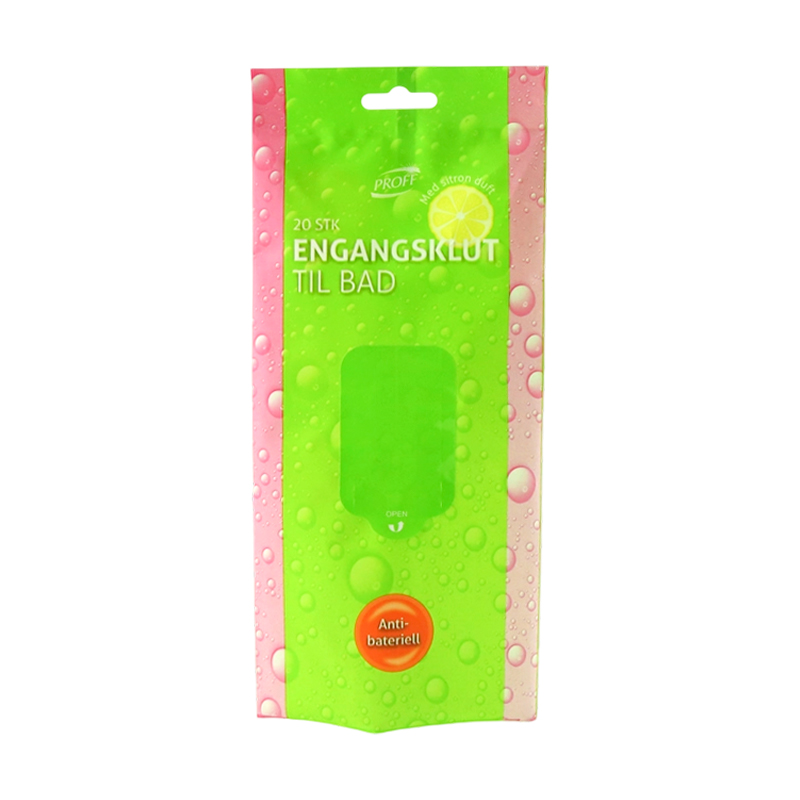2025-07-24
In recent years, the wet wipes market has experienced robust growth driven by increasing hygiene awareness, lifestyle changes, and expanded applications across personal care, medical, household, and industrial sectors. As consumer expectations rise, so does the demand for packaging solutions that ensure product freshness, ease of use, and environmental responsibility. Wet wipes composite packaging bags have emerged as a packaging innovation that addresses these challenges by offering a unique combination of durability, barrier protection, and design flexibility.
What Are Wet Wipes Composite Packaging Bags?
Wet wipes composite packaging bags are multi-layer laminated pouches specially engineered to store wet wipes in a moisture-retentive environment while protecting them from contamination and physical damage. These bags use composite film structures that combine various materials—such as polyethylene (PE), polypropylene (PP), polyester (PET), and aluminum foil—layered together to optimize strength, barrier properties, and printability.
The composite design allows for the integration of features like resealable openings, tear notches, and easy dispensing options, all while maintaining a compact, lightweight form factor that enhances convenience for consumers and efficiency for manufacturers.
Key Benefits and Functional Features
Moisture Retention: Wet wipes require packaging that prevents drying out, and composite films excel in moisture barrier performance. The laminated layers minimize water vapor transmission, keeping wipes moist and effective throughout their intended usage period.
Protection Against Contaminants: The multi-layer structure safeguards wipes from external contaminants such as dust, bacteria, and chemicals, helping to maintain hygiene and safety standards especially critical in medical and baby care wipes.
Mechanical Strength and Durability: Composite films offer puncture and tear resistance, protecting packaging integrity during manufacturing, transportation, retail handling, and consumer use.
Design and Branding Flexibility: These packaging bags support high-quality printing techniques, enabling vibrant, full-color graphics and customized branding that enhance shelf appeal and provide clear product information.
User-Friendly Features: Incorporation of resealable zippers, adhesive flaps, or easy-tear openings improve consumer convenience by enabling secure resealing and controlled wipe dispensing.

Industry Applications and Market Trends
Wet wipes composite packaging bags find applications across a broad spectrum of segments:
Personal Care: Baby wipes, facial cleansing wipes, and intimate hygiene wipes benefit from packaging that preserves moisture and softness while communicating product safety and gentle care.
Medical and Healthcare: Disinfectant wipes and antiseptic pads demand sterile, tamper-evident packaging that ensures hygiene compliance and easy access in clinical environments.
Household Cleaning: Multipurpose cleaning wipes require robust packaging that protects wipes from drying and physical damage, often incorporating resealable closures for repeated use.
Industrial Use: Heavy-duty wipes designed for automotive or manufacturing settings need durable, protective packaging to withstand harsh environments.
Recent market trends emphasize sustainability, many manufacturers to seek eco-friendly composite films that balance barrier performance with recyclability or biodegradability. Consumer demand for transparent, recyclable, or compostable packaging is influencing material innovation and design strategies.
Innovations Shaping Composite Packaging for Wet Wipes
The wet wipes packaging sector continues to evolve with technological advancements that enhance functionality and sustainability:
Advanced Barrier Materials: Incorporating materials such as EVOH (ethylene vinyl alcohol) or metallized films into composites improves oxygen and moisture resistance without significantly increasing film thickness.
Mono-Material Composites: Developing composite films primarily from a single type of polymer facilitates easier recycling while maintaining protective qualities.
Eco-Friendly Printing: Water-based and UV-curable inks reduce environmental impact while delivering vibrant, durable graphics.
Enhanced Dispensing Mechanisms: Innovations like micro-perforated dispensing areas and slider closures improve ease of use and prevent product waste.
Antimicrobial Coatings: Some packaging integrates antimicrobial layers to inhibit bacterial growth on packaging surfaces, enhancing product safety.